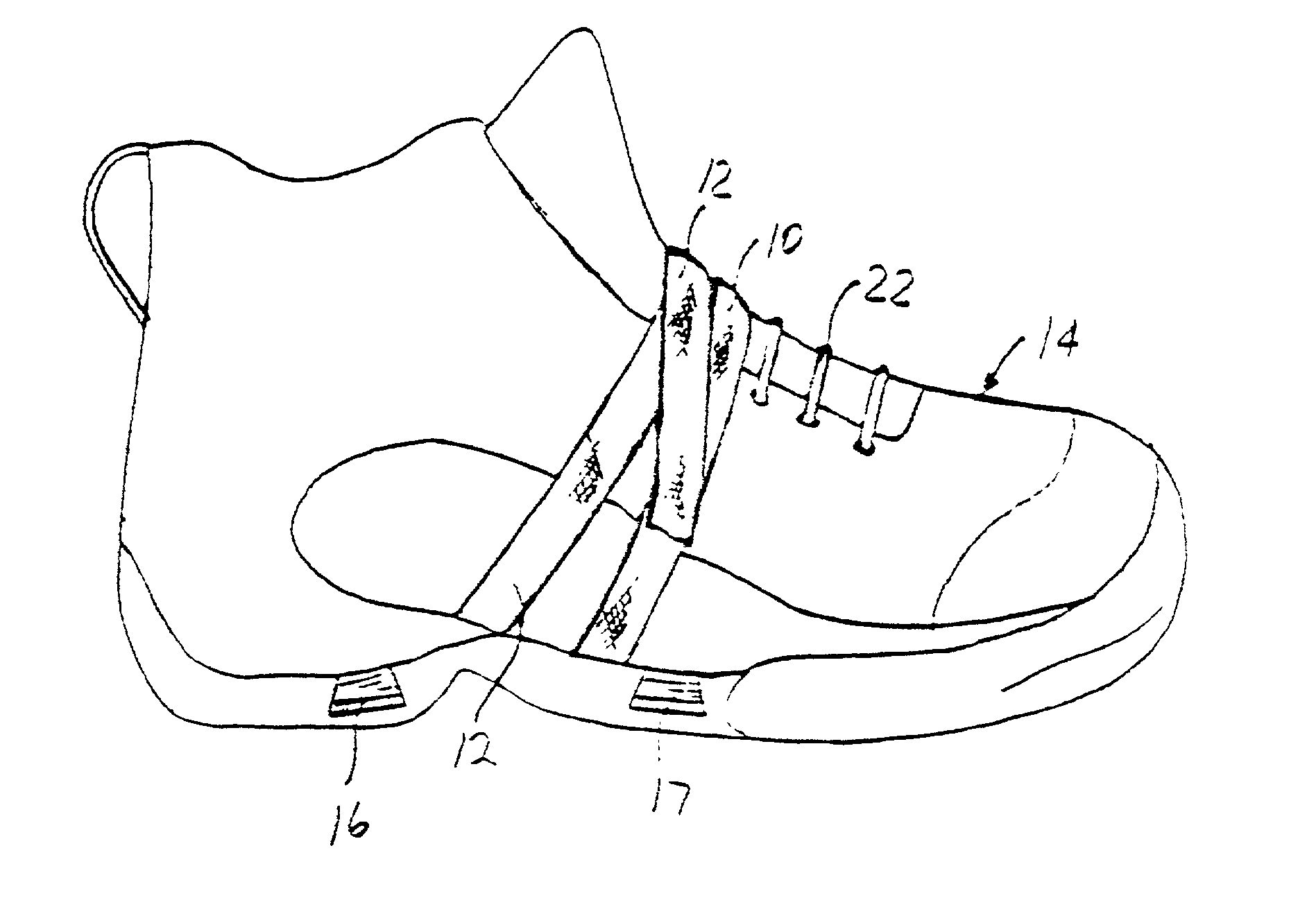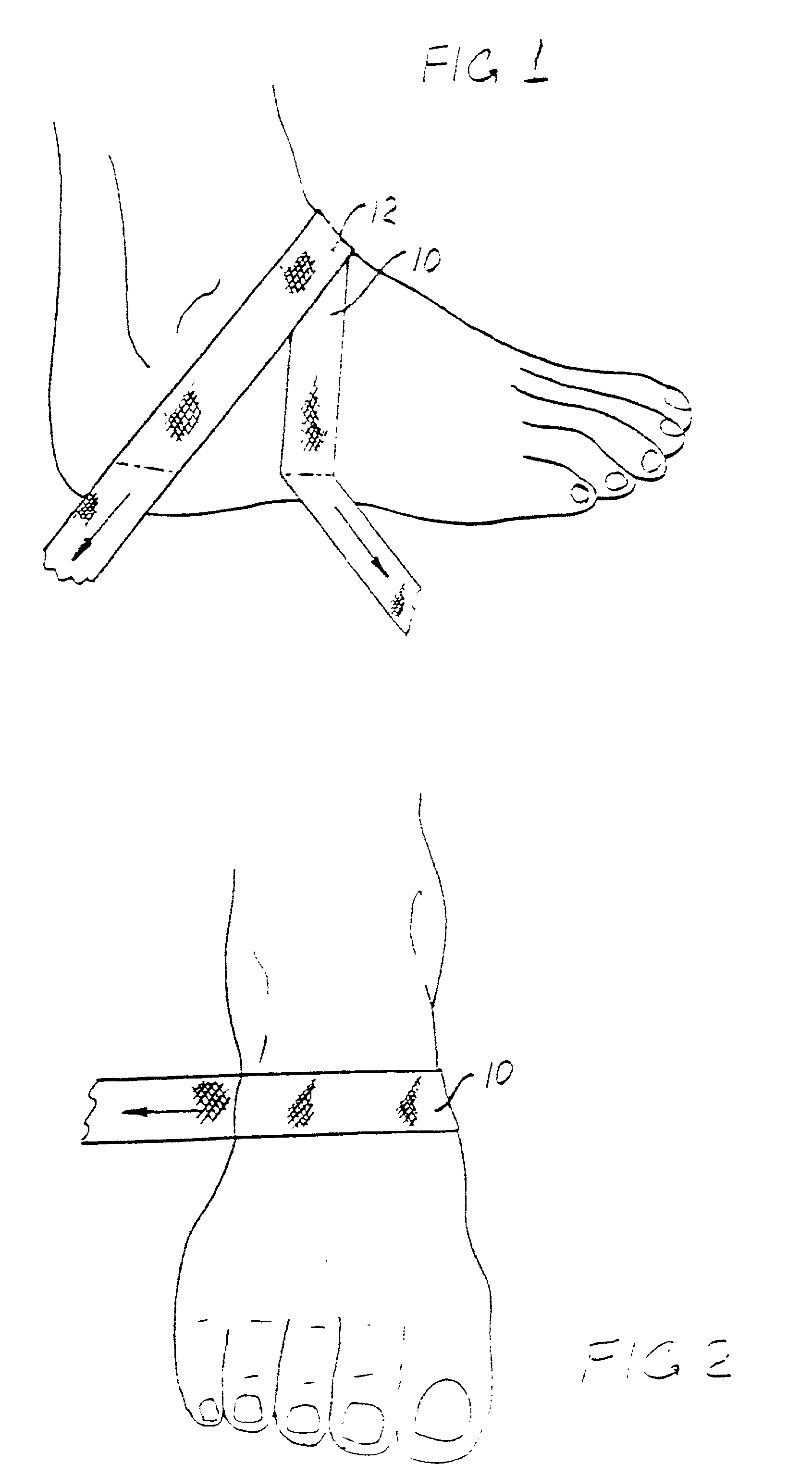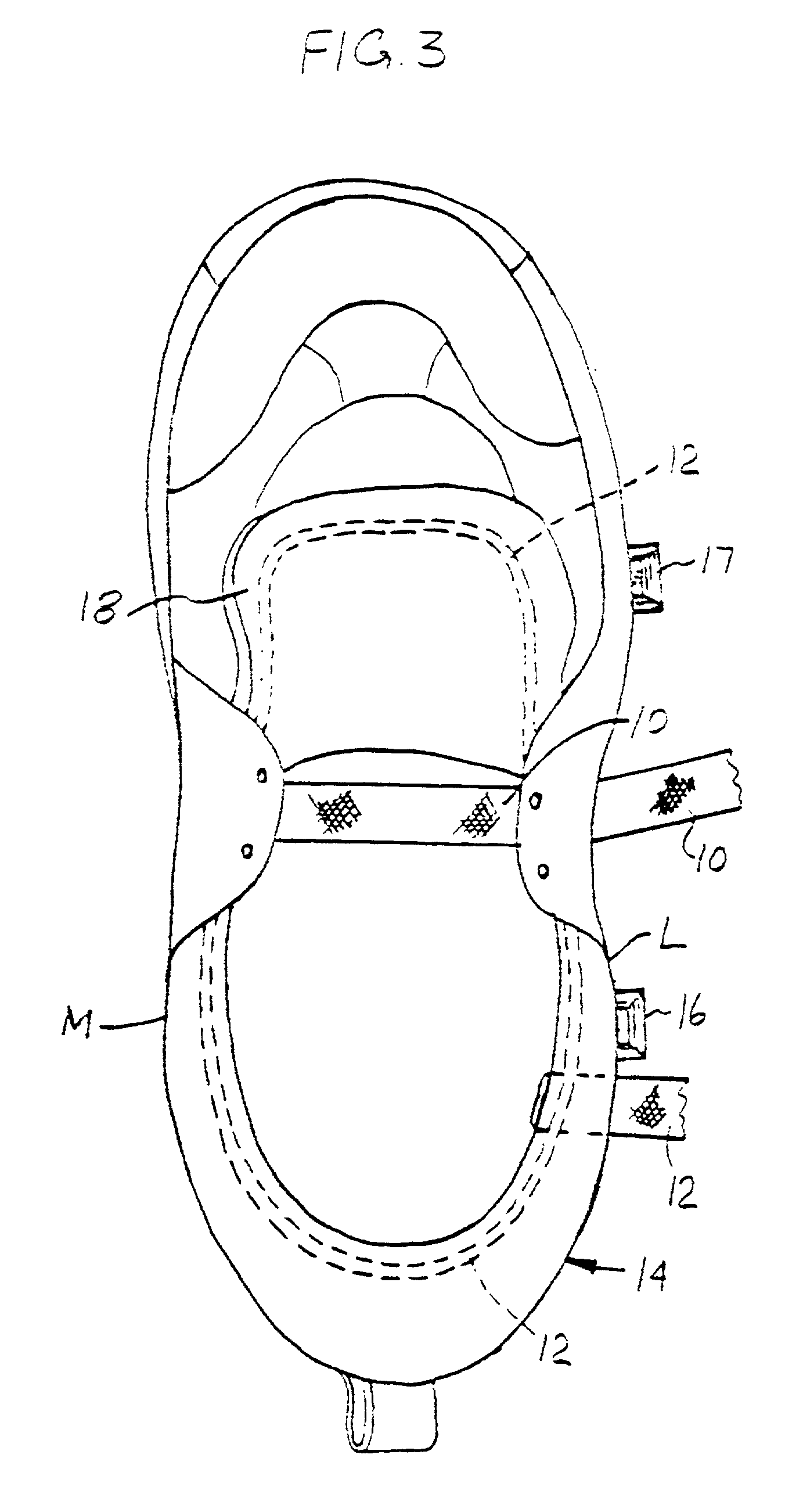Athletic shoe or sneaker with stabilization device
a technology for athletic shoes and stabilizers, which is applied in the direction of fastenings, uppers, bootlegs, etc., can solve the problems of high incidence of lateral ankle sprains, and specific problems of each of these extrinsic devices, so as to reduce or prevent acute angles, stiff consistency
- Summary
- Abstract
- Description
- Claims
- Application Information
AI Technical Summary
Benefits of technology
Problems solved by technology
Method used
Image
Examples
second embodiment
[0092] the present invention comprise lateral bumper supports. There will be preferably two lateral bumper supports, each preferably molded and manufactured into the sole laterally. The lateral bumper supports will preferably be intrinsic components of the sole, rather than be attached to it as an extrinsic device.
[0093] The more anterior lateral bumper support will be disposed at the level of the head of the 5.sup.th metatarsal, and the posterior lateral bumper support will be located at the anterior aspect of the heel, just proximal to the base of the 5.sup.th metatarsal. The lateral bumper supports will act as a "door-stop" and prevent further inversion of the ankle. These will be most effective when the foot lands awkwardly on the lateral sole on the ground.
[0094] The lateral bumper supports will preferably be made of a material having sufficient stiffness to resist a forced ankle inversion, such as a very hard rubber material and preferably will be shaped similar to a right tri...
third embodiment
[0097] the present invention provides overall enhancement of the stiffness of the upper component including the lateral and medial sidewalls of the shoe.
[0098] The upper component comprising the lateral wall and medial wall of the athletic shoe is thus made from a material having a more similar degree of stiffness as the bottom component (sole), than basketball shoes used heretofore, which should eliminate the acute bending of the shoe during forced inversion of the ankle. This can be done by making the upper component of a slightly stiffer material than heretofore utilized (such as leather) or by adding an elastic polymer compound.
[0099] An elastic polymer may be applied to both the medial and lateral aspects of the shoe to enhance the overall stiffness of the shoe. On the medial side, it forms a triangular shape, extending to an apex to the top of the more posterior buckle, extending across the medial upper soft component, and down to approximately the level of the head of the fir...
PUM
 Login to View More
Login to View More Abstract
Description
Claims
Application Information
 Login to View More
Login to View More - R&D
- Intellectual Property
- Life Sciences
- Materials
- Tech Scout
- Unparalleled Data Quality
- Higher Quality Content
- 60% Fewer Hallucinations
Browse by: Latest US Patents, China's latest patents, Technical Efficacy Thesaurus, Application Domain, Technology Topic, Popular Technical Reports.
© 2025 PatSnap. All rights reserved.Legal|Privacy policy|Modern Slavery Act Transparency Statement|Sitemap|About US| Contact US: help@patsnap.com



